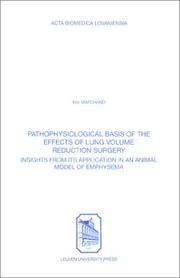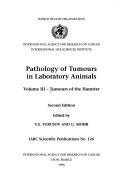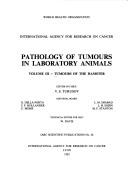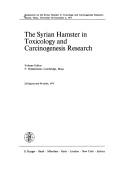| Listing 1 - 6 of 6 |
Sort by
|
Book
Year: 2005 Publisher: Bruxelles: UCL,
Abstract | Keywords | Export | Availability | Bookmark
 Loading...
Loading...Choose an application
- Reference Manager
- EndNote
- RefWorks (Direct export to RefWorks)
The Amyloid Precursor Protein (APP), which plays a central role in Alzheimer’s disease, is a widely expressed cell-surface protein whose normal biological function is poorly understood. The endoproteolytic cleavages of APP, controlled by alpha-, beta- and gamma- secretase activities, lead to the production of soluble APP and amyloid beta-peptide (Aβ). The γ-cleavage is also thought to be responsible for the release of an intracellular C-terminal fragment, named APP intracellular domain (AICD), that is involved in intracellular signalling. Fe65 is an adaptator protein that was reported to interact with AICD, but the role of Fe65 In the processing of APP and the AICD-dependent signalling remain unclear. The aim of our work was to analyze the mechanisms leading to AICD production.
To that end, we transfected APP-Gal4 fusion proteins in CHO cells and measured AICD release by a Gal4 transactivation assay. We first tested the effect of DAPT, a functional gamma-secretase inhibitor. Our data demonstrated, that APP-Gal4 is expressed and processed by the amyloidogenic and non-amyloidogenic pathways in CHO cells. Eight hours of treatment with DAPT (250nM) significantly reduced Aβ production (more than 90% of inhibition), but had no significant affect on Gal4 transactivation . We further showed that Fe65 expression strongly induced Gal4 transactivation. However, we observed that Fe65-transfected cells produced lower levels of extracellular Aβ1-40. We therefore propose that the cleavages leading to extracellular Aβ production and AICD release are different Le précurseur du petite amyloïde (APP), qui joue un rôle central dans la maladie d’Alzheimer, est une protéine membranaire dont la fonction biologique est, à ce jour, encore très peu connue. Les clivages endoprotéolytique de l’APP par les activités α-, β- et γ- sécrétase conduisent à la production d’APP soluble (APPsα) et de peptide amyloïde Aβ. Le clivage γ est également responsable de la libération d’un fragment C-terminal intracellulaire nommée AICD (APP IntraCellular Domain). Celui-ci semble être impliqué dans la signalisation intracellulaire de l’APP.
Fe65 est une protéine adaptatrice qui interagit avec l’AICD mais son rôle dans le métabolisme de l’APP et dans la voie de signalisation dépendante de l’AICD reste encore à élucider. Le but du travail est d’analyser les mécanismes conduisant à la production d’AICD.
Pour cela nous avons exprimé dans des cellules CHO des protéines de fusion APP Gal4 qui permettent de mesurer la libération d’AICD grâce à un test de transactivation de Gal4.
Nos données ont démontré que l’APP Gal4 était exprimé et métabolisé selon les voies cataboliques non-amyloïdogène est amyloïdogène dans les cellules CHO. Nous avosn testé l’effet de DAPT, un inhibiteur fonctionnel de la γ-sécrétase. Huit heures de traitements au DAPT (250nM) réduisent de manière significative ma production de peptide amyloïde (plus de 90% d’inhibition). Cependant, les effets du DAPT mesurés sur la libération d’AICD sont plus faibles. Nous avons ensuite montré que l’expression de Fe65 induisait l’activité transcriptionnelle contrôlée par l’AICD alors qu’elle diminuait la production de peptide amyloïde Aβ. L’ensemble de nos résultats suggère que les clivages menant à la production de peptide amyloïde Aβ et à la libération d’AICD sont distincts
Alzheimer Disease --- Amyloid --- Intracellular Space --- Cricetinae

ISBN: 9058672352 Year: 2002 Volume: 264 Publisher: Leuven Leuven University Press
Abstract | Keywords | Export | Availability | Bookmark
 Loading...
Loading...Choose an application
- Reference Manager
- EndNote
- RefWorks (Direct export to RefWorks)
Lung volume reduction surgery (LVRS) has become an accepted therapeutic option to relieve symptoms of selected patients with severe emphysema. In a majority of these, it causes objective as well as subjective functional improvement. A proper understanding of the physiological determinants underlying these beneficial effects appears very important in order to better select patients for the procedure which is currently largely done on an empirical basis. On the average, LVRS results in two distinct effects. First, it increases the lung elastic recoil which explains at least partially the enhanced maximal expiratory flow. Second, it is associated with a reduction of hyperinflation which allows for an increase in global inspiratory muscle strength and in diaphragmatic contribution to tidal volume (VT) as well as a decrease if the inspiratory elastic load imposed by the inward movement of the chest wall at the beginning of inspiration. Taken together, these effects result in a reduced dyspnea and increased exercise capacity after surgery. The improved lung recoil and the reduced hyperinflation after volume reduction surgery were the primary postulates upon which the usual selection criteria for the procedure were based. It is now likely that these were correct. Nevertheless, some patients do not benefit from LVRS and the current literature does not allow us to refine the selection process from a physiological point of view. The exact mechanisms underlying the improvement of lung recoil, lung mechanics, and respiratory muscle function remain incompletely understood. Moreover, the effects of LVRS on gas exchange and pulmonary hemodynamics are still to be more fully investigated. An analysis of the characteristics of patients who do not benefit from the procedure and the development of an animal model fro LVRS would probably help us to address these important issues
Proefschriften --- Thèses --- Pneumonectomy --- Pulmonary Emphysema --- Dyspnea --- Cricetinae --- Academic collection

ISBN: 9283221265 Year: 1996 Volume: 126 Publisher: Lyon : I.A.R.C. (International agency for research on cancer),
Abstract | Keywords | Export | Availability | Bookmark
 Loading...
Loading...Choose an application
- Reference Manager
- EndNote
- RefWorks (Direct export to RefWorks)

ISBN: 9283211340 9789283211341 Year: 1982 Volume: 3 34 Publisher: Lyon Lyon IARC International agency for research on cancer
Abstract | Keywords | Export | Availability | Bookmark
 Loading...
Loading...Choose an application
- Reference Manager
- EndNote
- RefWorks (Direct export to RefWorks)
Carcinogenicity testing --- Hamsters --- Pathology, Comparative --- Tumors --- Diseases --- Animal models --- -Pathology, Comparative --- -Neoplasms --- Tumours --- Pathology --- Cysts (Pathology) --- Oncology --- Comparative pathology --- Medicine, Comparative --- Cricetinae --- Cricetini --- Muridae --- Carcinogenesis --- Carcinogenic activity testing --- Carcinogens --- Testing for carcinogenicity --- Chronic toxicity testing --- Oncology, Experimental --- Testing --- -Diseases --- -Comparative pathology --- Neoplasms --- Hamsters - Diseases --- Tumors - Animal models

ISBN: 3805528906 Year: 1979 Publisher: Basel ; München ; Paris : Karger,
Abstract | Keywords | Export | Availability | Bookmark
 Loading...
Loading...Choose an application
- Reference Manager
- EndNote
- RefWorks (Direct export to RefWorks)
Carcinogens. --- Cricetinae. --- Neoplasms, Experimental --- Toxicology. --- Cancer --- -Carcinogenesis --- -Golden hamster --- -Hamsters as laboratory animals --- -Toxicology, Experimental --- -Experimental toxicology --- Laboratory animals --- Hamster, Golden --- Hamster, Syrian --- Mesocricetus auratus --- Syrian hamster --- Mesocricetus --- Oncogenesis --- Pathogenesis of cancer --- Tumorigenesis --- Pathology --- Genetic toxicology --- Cancers --- Carcinoma --- Malignancy (Cancer) --- Malignant tumors --- Tumors --- Evidence Based Toxicology --- Evidence-Based Toxicology --- Toxinology --- Based Toxicologies, Evidence --- Based Toxicology, Evidence --- Evidence Based Toxicologies --- Evidence-Based Toxicologies --- Toxicologies, Evidence Based --- Toxicologies, Evidence-Based --- Toxicology, Evidence Based --- Toxicology, Evidence-Based --- Pharmacogenetics --- Cricetus --- Hamsters --- Hamster --- Oncogens --- Tumor Initiators --- Tumor Promoters --- Initiators, Tumor --- Promoters, Tumor --- Benzidines --- Neoplasms --- etiology. --- Animal models --- -Congresses --- Congresses --- Physiology --- Pathogenesis --- -etiology. --- Carcinogenesis --- Golden hamster --- Hamsters as laboratory animals --- Toxicology, Experimental --- Carcinogens --- Cricetinae --- Toxicology --- Experimental toxicology --- Animal models&delete& --- Physiology&delete& --- etiology --- Carcinogen --- Oncogen --- Tumor Initiator --- Tumor Promoter --- Initiator, Tumor --- Promoter, Tumor
Book
ISBN: 443187772X 9786611986926 1281986925 4431877738 Year: 2009 Publisher: Tokyo : Springer Japan,
Abstract | Keywords | Export | Availability | Bookmark
 Loading...
Loading...Choose an application
- Reference Manager
- EndNote
- RefWorks (Direct export to RefWorks)
Malignant neoplasms occurring in the biliary tract and pancreas remain a therap- tic challenge. The mechanism of carcinogenesis as well as the growth and spread of these tumors is still poorly understood, making the development of rational tre- ment strategies difficult. In order to improve the clinical results achieved by sur- cal or other medical treatment of such malignant tumors, the establishment of an experimental animal model is critical. For this purpose, attempts were made to induce carcinoma experimentally in the biliary tree and finally an animal model using the hamster was established in 1994 at our laboratory. Because the tumor in this model mimicked the characteristics of human tumors, a series of experimental investigations were conducted to clarify the pathological characteristics of biliary carcinoma, the genetic alterations during biliary carcinogenesis, and the relationship between biliary inflammation and c- cinogenesis. The chemopreventive effects on the occurrence of biliary carcinoma were also successfully examined. In addition, in vitro studies led to the establi- ment of transplantable biliary cancer cell lines and biliary epithelial cell lines by utilizing the hamster model. This monograph represents the collective efforts in hepato-biliary and pancreatic disease research over the past 20 years. I hope that this monograph will be a source of useful knowledge for basic researchers as well as for clinicians involved in the care of patients with hepato-biliary and pancreatic neoplasms. Takashi Kanematsu, M.D., Ph.D.
Animal Physiology. --- Cancer -- Animal models. --- Cytology -- Technique. --- Biliary Tract Neoplasms --- Pancreatic Neoplasms --- Cricetinae --- Liver Neoplasms --- Models, Animal --- Carcinoma --- Pancreatic Diseases --- Digestive System Neoplasms --- Muridae --- Endocrine Gland Neoplasms --- Neoplasms, Glandular and Epithelial --- Investigative Techniques --- Liver Diseases --- Biliary Tract Diseases --- Endocrine System Diseases --- Digestive System Diseases --- Neoplasms by Histologic Type --- Analytical, Diagnostic and Therapeutic Techniques and Equipment --- Neoplasms by Site --- Rodentia --- Diseases --- Neoplasms --- Mammals --- Vertebrates --- Chordata --- Animals --- Eukaryota --- Organisms --- Oncology --- Gastroenterology --- Medicine --- Health & Biological Sciences --- Liver --- Biliary tract --- Pancreas --- Animal models. --- Biliary tree --- Medicine. --- Cancer research. --- Hepatology. --- Surgical oncology. --- Animal anatomy. --- Animal physiology. --- Biology --- Biomedicine. --- Cancer Research. --- Biological Techniques. --- Animal Anatomy / Morphology / Histology. --- Surgical Oncology. --- Technique. --- Digestive organs --- Endocrine glands --- Exocrine glands --- Bile --- Abdomen --- Oncology. --- Cytology --- Morphology (Animals). --- Clinical medicine. --- Research --- Methodology. --- Cancer --- Oncologic surgery --- Oncological surgery --- Surgical oncology --- Medicine, Clinical --- Animal physiology --- Anatomy --- Animal morphology --- Body form in animals --- Zoology --- Morphology --- Cell biology --- Cellular biology --- Cells --- Cytologists --- Tumors --- Excision --- Treatment --- Physiology --- Biology—Technique. --- Animal anatomy --- Cancer research
| Listing 1 - 6 of 6 |
Sort by
|

 Search
Search Feedback
Feedback About UniCat
About UniCat  Help
Help News
News